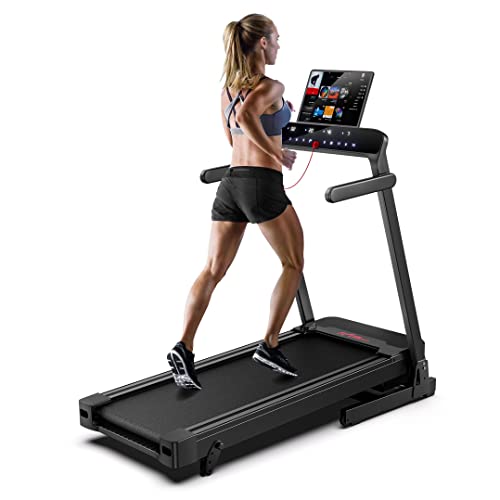Treadmills: A Comprehensive Guide to Understanding Their Functionality, Benefits, and Appropriate Selection
Intro
Treadmills have actually ended up being a staple in contemporary physical fitness regimens, both in homes and fitness centers worldwide. They offer a hassle-free and effective way to preserve cardiovascular health, boost endurance, and assist in weight management. This article explores the various kinds of treadmills, their benefits, functions to consider when purchasing, and some FAQs to guide users in making informed decisions.
Kinds of Treadmills
When it comes to selecting a treadmill, it is essential to comprehend the various types available in the market. Here are the primary classifications:
1. Handbook Treadmills
- Mechanism: These treadmills have a simple style and count on the user's efforts to move the belt.
- Pros: More affordable, quieter operation, no electricity required.
- Cons: Limited features, may not supply the very same variety of workout strength.
2. Motorized Treadmills
- Mechanism: Powered by a motor that drives the belt, enabling users to stroll or perform at a set pace.
- Pros: Greater range of speeds and slopes, geared up with numerous functions such as heart rate displays and workout programs.
- Cons: More pricey and may require more upkeep.
3. Folding Treadmills
- Mechanism: Designed for those with limited area, these treadmills can be folded for easy storage.
- Pros: Space-saving, often motorized, flexible features.
- Cons: May be less long lasting than non-folding designs.
4. Industrial Treadmills
- System: High-quality machines designed for usage in fitness centers and gym.
- Pros: Built to withstand heavy usage, advanced functions, often include service warranties.
- Cons: Pricey and not ideal for home usage due to size.
5. Curved Treadmills
- Mechanism: A special design that enables users to propel the belt using their own energy.
- Pros: Offers a more natural running experience, promotes much better running kind.
- Cons: More expensive and can be noisier.
| Treadmill Type | Pros | Cons |
|---|---|---|
| Handbook | Affordable, no electricity required | Restricted features |
| Motorized | Range of speeds, advanced functions | Upkeep needed |
| Folding | Space-saving, typically motorized | May lack resilience |
| Commercial | Built to last, professional-grade features | Expensive |
| Curved | Natural running experience, promotes good form | Greater price |
Advantages of Using Treadmills
Treadmills provide numerous advantages that can contribute to one's overall fitness goals. A few of these benefits consist of:
- Convenient Workouts: Treadmills enable users to exercise inside no matter weather.
- Cardiovascular Health: Regular use can improve heart health by increasing stamina and promoting healthy circulation.
- Weight Management: Effective for burning calories, which assists in weight reduction and management.
- Adjustable Workouts: Users can control speed, slope, and duration to create individualized exercise experiences.
- Security: Treadmills offer a foreseeable surface, decreasing the danger of falls compared to outdoor running.
- Multifunctional: Many treadmills come with features like heart rate displays, exercise programs, and even home entertainment systems.
Picking the Right Treadmill
When picking a treadmill, potential purchasers need to consider numerous crucial aspects:
Features to Consider:
- Motor Power: Typically measured in horse power (HP), a motor strength of at least 2.5 HP is advised for serious runners.
- Belt Size: A longer and larger belt accommodates various stride lengths, supplying convenience throughout workouts.
- Slope Settings: Adjustable incline functions simulate outdoor hill running and can increase workout intensity.
- Weight Capacity: Ensure the treadmill can support the user's weight for safety and durability.
- Console Features: Look for user-friendly control panels, workout programs, and Bluetooth compatibility for streaming music or other functions.
Budget Considerations
- Under ₤ 500: Entry-level manual treadmills suitable for casual walkers.
- ₤ 500 - ₤ 1,500: Mid-range motorized treadmills that offer more features and better sturdiness.
- ₤ 1,500 - ₤ 3,000: High-end models with innovative technology, larger motors, and longer guarantees.
- Over ₤ 3,000: Commercial-grade treadmills perfect for regular usage in gyms or training centers.
Frequently Asked Questions (FAQs)
1. How often should I use a treadmill?
It is advised to use a treadmill at least 3 to 5 times a week, including various intensity levels for best outcomes.
2. Can I slim down by utilizing a treadmill?
Yes, constant use of a treadmill can contribute to weight reduction, particularly when combined with a well balanced diet and strength training.
3. What is the best speed to walk on a treadmill for newbies?
A speed of 3 to 4 miles per hour is an ideal range for beginners. more info to begin slow and slowly increase pace as comfort and stamina improve.
4. Do I need to use a treadmill if I already run outdoors?
Utilizing a treadmill can supply additional advantages, such as regulated environments and varied workouts (slope, intervals) that are not always possible outdoors.
5. How do I maintain my treadmill?
Routine upkeep includes oiling the belt, cleaning the deck and console, and examining the motor for optimum efficiency.
Treadmills are essential tools for those looking to enhance their physical fitness levels in a regulated and convenient way. With numerous types available, understanding their features and advantages is important for making a notified purchase. By thinking about personal exercise requirements, area accessibility, and spending plan constraints, individuals can find the most appropriate treadmill that fits their way of life. Incorporating treadmill workouts into a well balanced physical fitness routine can cause enhanced health results and a satisfying exercise experience.

